In this brief article, we’ll take you through the performance of solar panels in space vs. on Earth and talk about how much difference is there .
Let’s dive into it!
Main Differences
Atmospheric consideration
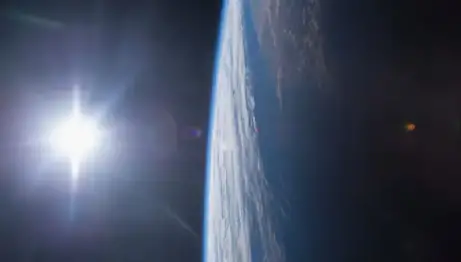
The invention of solar panels has revolutionized the world. However, as we’re still in the “new” technology era where solar panels can be further improved, we have no efficient way to recycle solar panels.
When solar panels break down or get thrown away, they end up in landfills where they “explode with full force in two or three decades and wreck the environment” (Forbes).
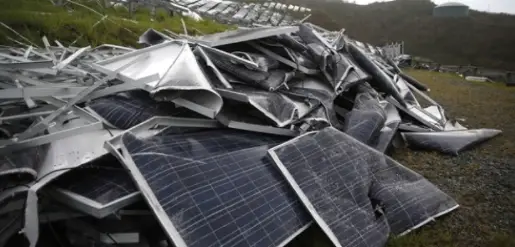
Solar panels release a lot of toxic chemicals when the solar cells are split open or thrown away. There isn’t a worry about releasing these harmful chemicals in space, as chemicals need a medium or air to travel, but there isn’t any air in space.
With that said, solar-array-filled space stations do not get put out of service in space. Space stations land back on Earth, where the solar panels are to be replaced if they are inefficient or broken from space debris. Those solar panels will likely face the same consequences that residential solar panels face—landfills.
While efficient and recyclable solar panels are in the process of being invented, natural disasters are ruining solar panels every day, with hail storms or windstorms destroying residential solar panels.
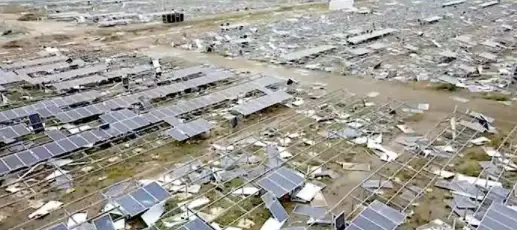
In 2015, a tornado broke more than 200,000 solar modules in Desert Sunlight, a solar farm in Southern California. Hurricane Maria tore through Puerto Rico’s second-largest solar farm, and as a result, the nation lost 40% of its electricity.
Don’t let that discourage you from setting a solar panel—there are a lot of strong, durable solar panels that withstand natural disasters out in the market for premium use. Due to budgeting by private companies and cities, they use more fundamental solar panels for their huge solar fields. While most solar panels last for more than 20-25 years, hopefully, there will be a better recycling program for solar panels.
Efficiency comparison
Solar power and efficiencies differ from the roof of a house to a satellite in space.
For satellites, spacecraft, and space stations, high-efficiency solar panels generate the maximum amount of electricity. Space-based solar panels offer several benefits.

Since there is no air or atmosphere in space, sunlight can be received by the space-based solar panels purely and raw. In contrast, sunlight that targets the Earth’s solar panels must pass through the several layers of Earth’s atmosphere, including molecules, dust, debris, and other elements in the sky. These elements prevent a lot of sunlight from reaching Earth.

Unlike Earth, space does not have a day-and-night cycle—if adequately placed, satellites can receive sunlight 24 hours a day all year round. Because of this, on average, solar panels in space receive more than 420% more sunlight per day than solar panels on Earth.
Solar Panel Technology for Spacecraft and Satellites
The best source of energy for powering the space station or any other spacecraft is solar power 200+ miles above in space.
There are solar arrays that consist of thousands of solar cells that convert solar energy into usable electricity for almost all of the electric functions onboard the space station.
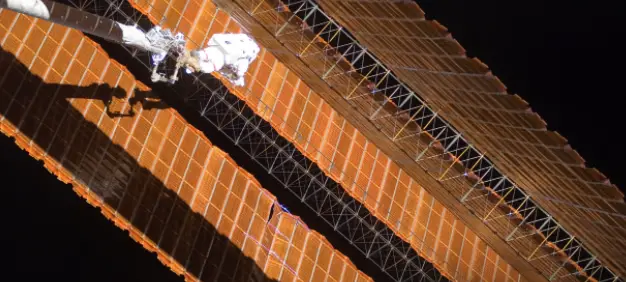
Since having a nuclear reactor is unsafe and inefficient inside the space station, solar arrays come in handy in this situation and provide plenty of electricity—the International Space Station (ISS) can stay in space for more than a decade.
With eight solar arrays that rotate to get the most amount of sunlight, that’s almost an acre of solar panels, which makes sense since the ISS is approximately the size of a football field. Unlike someone on Earth who experiences an average of around 8 hours of direct sunlight a day, the people on the ISS orbit the Earth once every 90 minutes and witness 16 sunrises every day.
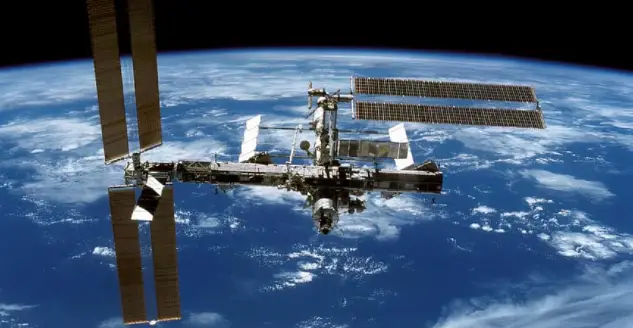
When the ISS is in sunlight, around 60% of the electricity collected in the solar arrays is used to charge the batteries on the station. The rest of the electricity powers the station’s systems and experiments. When the station is behind the Earth and experiences no sunlight, the ISS’s batteries kick in and power the station until sunlight is available again.
To keep the ISS running, around 75-90 kW of power is needed—luckily, the solar arrays produce approximately 84-120 kW of electricity which is enough to power more than 40 homes in the United States.
Check out how NASA delivered and deployed solar panels on the ISS
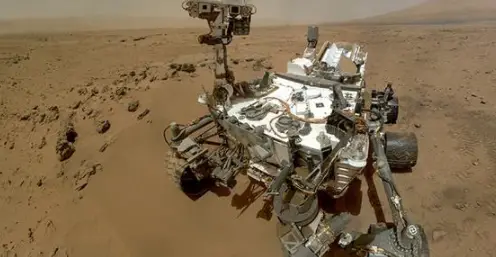
Using a more relevant example, the rovers that are on Mars use solar power to get their electricity, allowing them to move, use their science instruments, and communicate back with Earth.
Because the rovers don’t use anything of high power except for the motor that drives the machine forward, they only need about 100 Watts of power to operate, approximately equal to the Wattage of a standard light bulb in a home. For comparison, the 1997 Pathfinder rover only required 16 Watts of power at noon on Mars to operate.
Do we plan on harvesting solar energy from space back to earth?
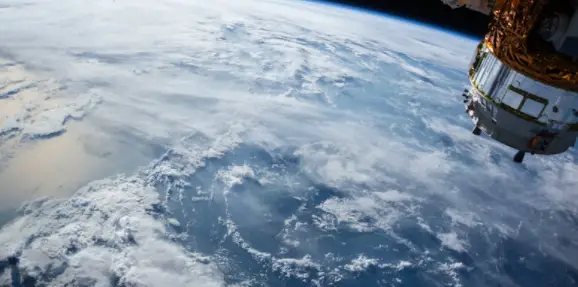
A solar farm in space is ideal for generating free electricity. So far we have the concept design but nothing in functional use yet.
We could always send a bunch of batteries and solar arrays up to space on a space station and have it be dropped back on Earth, but that is highly inefficient and vastly expensive, as it is much easier and cheaper to generate the amount of electricity that we’d get from Earth.
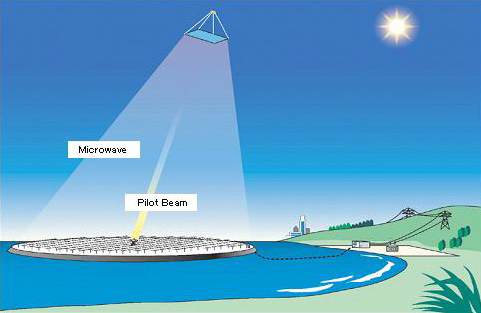
One of the most promising technology is the use of microwaves.
Engineers are working on a microwave-transmitting solar satellite that will convert stored energy from solar panels into uninterrupted microwave energy that is beamed back to Earth.
These satellites will orbit Earth around 22,000 miles away from Earth’s surface and provide enough electricity to be beamed back to Earth to power a large city. Since this a relatively new concept, it is still being developed as we speak and will most likely take several years down the road to start manufacturing this $10 billion work-of-art.
Wrapping up
The biggest takeaway from this article is that solar panel is highly more efficient in space than on Earth, but the technology to transmit energy from space to Earth does not exist yet.
This topic excites many people, as an invention of such a device would lead to further advancements of humankind and the innovation of a Dyson sphere, but that is a topic for a different day!
